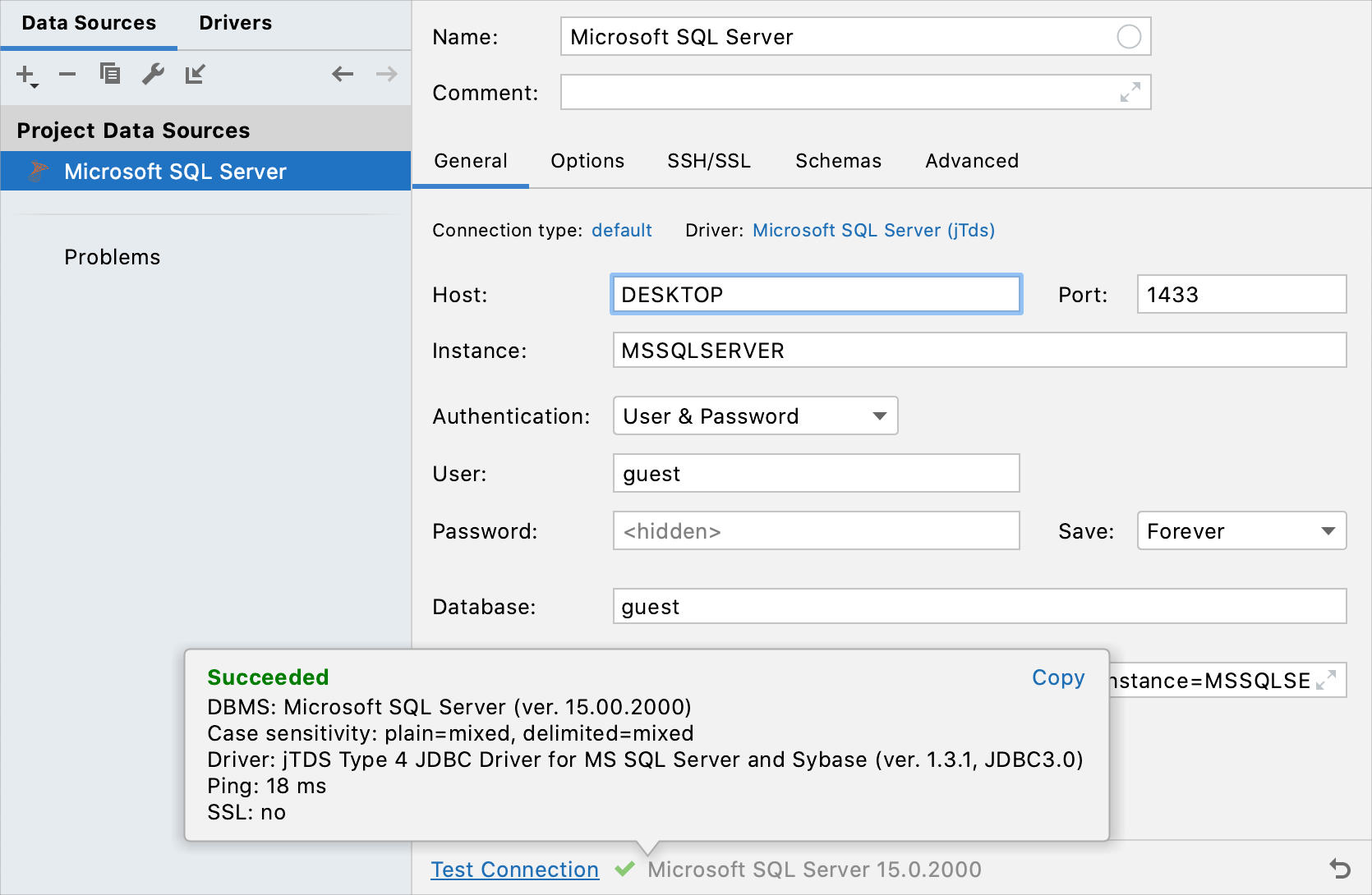
- #Android sql server client registration#
- #Android sql server client android#
- #Android sql server client code#
To take this advantage, you will need to download my source from Github and run it without changing the SERVER_URL and SENDER_ID or Google Services Configuration File (whatever is used).Ĭreate a project on Google Developer Console ¶ You won't be able to send any notification though (I have disabled it for security purposes) you will only be able to register/unregister and thus see the up-down of the number of registered users in Admin Panel.
I am providing a test Admin Panel with this tutorial for now. If you use localhost, then you may need to expose your localhost to the Internet to test it in a real device for an emulator you shouldn't need to do that. Either WAMP, LAMP or XAMP will do, or even better if you test it from a live site. So make sure you have those setup before starting to write the server side code. It uses PHP (a little CURL) and MySqli. #Android sql server client registration#
GCM doesn't allow more than 1000 registration ids at once.  It will show the number of registered users i.e when registering or un-registering you will be able to see the increase or decrease of the number of registered users in Admin Panel. It will send notification to all subscribed users. It will be able to handle multiple types of notifications and trigger different events accordingly. The refresh button will retrieve a fresh id from GCM server and register it to your own notification server. The unregister button will unregister the id from both GCM server and your own notification server. By default, if a previous registration id is available, it will use that id from shared prefs instead of a fresh retrieval. It will use shared preferences to store some necessary information. It will implement registration/un-registration to your own server using an exponential back-off (a retry mechanism). It will provide users the ability to retry/refresh the registration/un-registration with GCM server. Client app will register with GCM using an intent service. This tutorial will cover the following criteria/features regarding GCM Push Notification: Implement a server side API to get and store registration ids from the client app and optionally provide an Admin panel to send push notification from.
It will show the number of registered users i.e when registering or un-registering you will be able to see the increase or decrease of the number of registered users in Admin Panel. It will send notification to all subscribed users. It will be able to handle multiple types of notifications and trigger different events accordingly. The refresh button will retrieve a fresh id from GCM server and register it to your own notification server. The unregister button will unregister the id from both GCM server and your own notification server. By default, if a previous registration id is available, it will use that id from shared prefs instead of a fresh retrieval. It will use shared preferences to store some necessary information. It will implement registration/un-registration to your own server using an exponential back-off (a retry mechanism). It will provide users the ability to retry/refresh the registration/un-registration with GCM server. Client app will register with GCM using an intent service. This tutorial will cover the following criteria/features regarding GCM Push Notification: Implement a server side API to get and store registration ids from the client app and optionally provide an Admin panel to send push notification from. #Android sql server client android#
Implement an Android Client app to register with GCM, send the registration id to your push notification server and manage the notifications sent from your server via GCM. 
Get the SENDER_ID of the project or create a configuration file.Create a project on Google Developer Console.To get this service from Google, however, you will need to do certain things: The GCM service handles all aspects of queueing of messages and delivery to client applications running on target devices, and it is completely free. Send data from your server to your users' devices, and receive messages from devices on the same connection. GCM (Google Cloud Messaging) documentation says:
#Android sql server client code#
Test the code with a demo Push Notification Admin Panel.Implement a Push Notification Server (gcmsender) using PHP and MySqli.Implement a basic but comprehensive GCM client app in Android.

Create a project (GCM-Demo) in Google Developer Console and enable GCM.







 0 kommentar(er)
0 kommentar(er)
